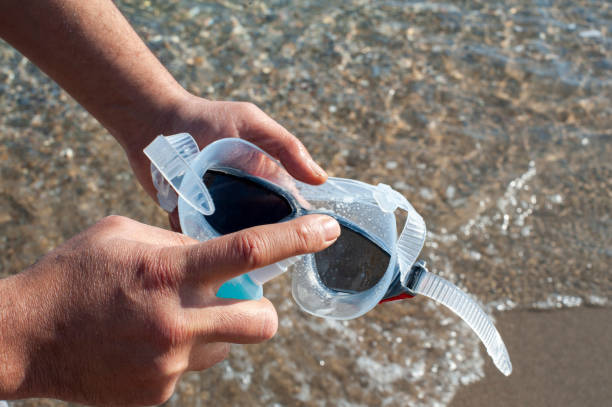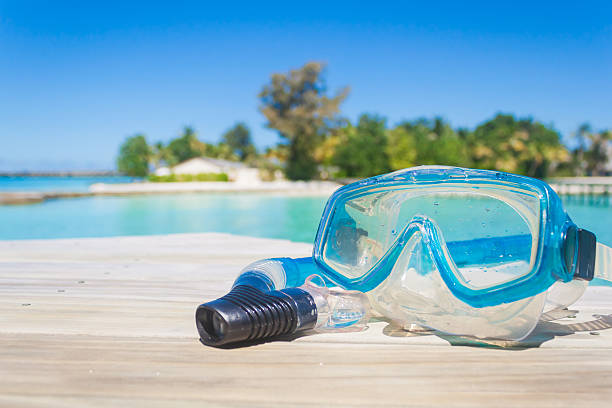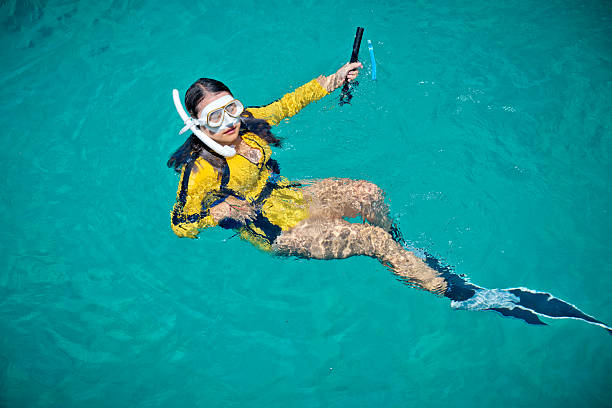Snorkeling is one of the most accessible and exciting ways to explore the underwater world. But before embarking on your snorkeling adventure, one essential question arises: should you use a full face snorkel mask or stick with the traditional snorkel set? Each type of mask offers a different experience, and understanding the distinctions is key to making the right choice.
In this guide, we’ll explore the differences between the two mask types, weigh their pros and cons, assess safety concerns, and help you choose the best option for your needs. Whether you’re a beginner or a seasoned snorkeler, this article will offer expert guidance to enhance your underwater experience.
Key Differences Between Full Face and Regular Snorkel Masks
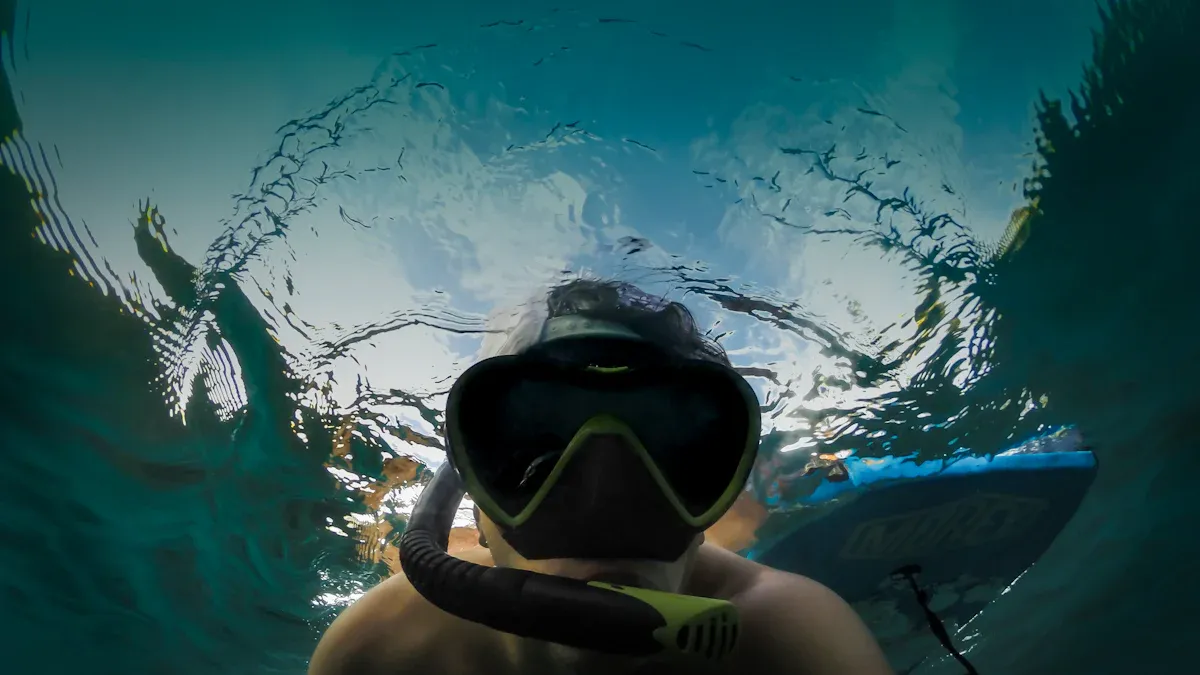
Choosing between a full face snorkel mask and a regular snorkel mask starts with understanding how they differ across multiple aspects. Here’s a breakdown of their key distinctions.
Breathing Method
Full face snorkel masks allow users to breathe through both the nose and mouth, offering a more relaxed and natural breathing experience. In contrast, traditional snorkel masks require users to breathe only through the mouth using a separate snorkel tube, which can take some adjustment, especially for beginners.
Campo de visión
A full face mask typically offers a panoramic 180-degree field of vision, giving users a wider view of their underwater surroundings. Traditional masks provide a more limited forward view, which is narrower but sufficient for most snorkeling activities.
Airflow and Fogging
Full face masks incorporate an internal airflow system to separate inhaled and exhaled air. This can reduce potential for fogging, though ventilation must be well-designed. Regular snorkel masks rely on simpler airflow, which may fog more easily unless treated or designed with anti-fog lenses.
Safety and Suitability
The safety concerns for full face masks revolve around possible CO2 buildup and lack of pressure equalization, making them suitable only for surface snorkeling. Traditional masks allow divers to pinch their nose to equalize pressure, making them safer for diving or deeper exploration.
Summary Table
| Aspect | Máscara de snorkel de cara completa | Regular Snorkel Mask |
| Breathing Method | Nose and mouth (natural breathing) | Mouth only |
| Campo de visión | Wide panoramic view | Forward-focused, narrower view |
| Airflow & Fogging | Dual airflow system; reduced fogging | Simpler airflow; may fog without treatment |
| Safety & Suitability | Surface snorkeling only; CO2 risk | Suitable for diving; easy pressure equalization |
Full Face Snorkel Mask: Pros and Cons
Ventajas
- Respiración natural: One of the standout features is the ability to breathe through both your nose and mouth. This makes snorkeling less intimidating, especially for first-timers.
- Clearer vision and wide view: The mask provides an unobstructed, 180-degree field of vision, enhancing the immersive experience.
- No jaw fatigue: There’s no need to bite a mouthpiece, making it more comfortable for longer sessions.
- Reduced water entry: The dry-top snorkel system reduces the chance of water getting in, which is great for calm water conditions.
Contras
- Safety concerns: Some users report issues with CO2 build-up inside the mask, which can lead to dizziness or shortness of breath if the mask isn’t properly ventilated.
- Not suitable for diving: Equalizing ear pressure is difficult, so these masks are only recommended for surface-level snorkeling.
- Potential for fogging: While most masks have anti-fog features, the larger lens area can still cause fogging under certain conditions.
- Bulkier design: They are heavier and harder to pack for travel.
Regular Snorkel Mask: Pros and Cons
Ventajas
- Better for freediving or skin diving: You can pinch your nose to equalize pressure when going underwater, which is impossible with a full face mask.
- Compact and travel-friendly: Smaller and lighter, it’s easier to carry on trips.
- Customizable: You can choose from various snorkel and mask designs, optimizing for fit and clarity.
- Fewer safety concerns: There’s less risk of CO2 build-up due to open airflow.
Contras
- Mouth-only breathing: This takes some getting used to and may cause discomfort during longer sessions.
- Jaw fatigue: Holding the snorkel mouthpiece in place can become tiring.
- Narrower field of vision: The standard lens design provides a more focused but less panoramic view.
- Greater chance of water entry: Without a dry-top snorkel, water may enter if you’re not careful with your positioning.
Which Mask Is Safer? A Look at CO2 Build-Up and Pressure Equalization
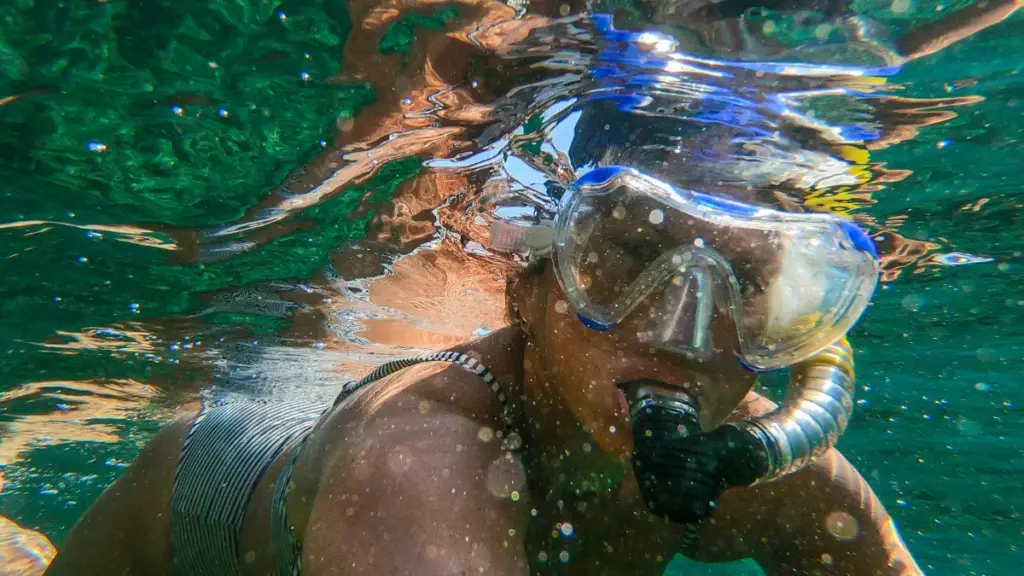
When considering safety concerns, it’s essential to know how each mask type functions.
Full face snorkel masks have received criticism for CO2 build-up, particularly in poorly designed models. If exhaled carbon dioxide isn’t adequately vented, it can accumulate in the mask and cause dizziness, confusion, or even fainting. Quality models now include dual airflow systems that separate inhaled and exhaled air to minimize this risk, but caution is still advised.
In contrast, traditional snorkel masks don’t trap air around the face, significantly reducing the risk of CO2 accumulation. However, water can enter the tube, especially during waves or diving, which poses a different kind of safety challenge.
Pressure equalization is another key issue. Full face masks don’t allow you to pinch your nose, which makes equalizing ear pressure impossible during dives. This restricts their use to surface snorkeling only. On the other hand, with a traditional snorkeling mask, you can dive deeper and equalize with ease.
How to Choose Between Full Face and Regular Snorkel Masks
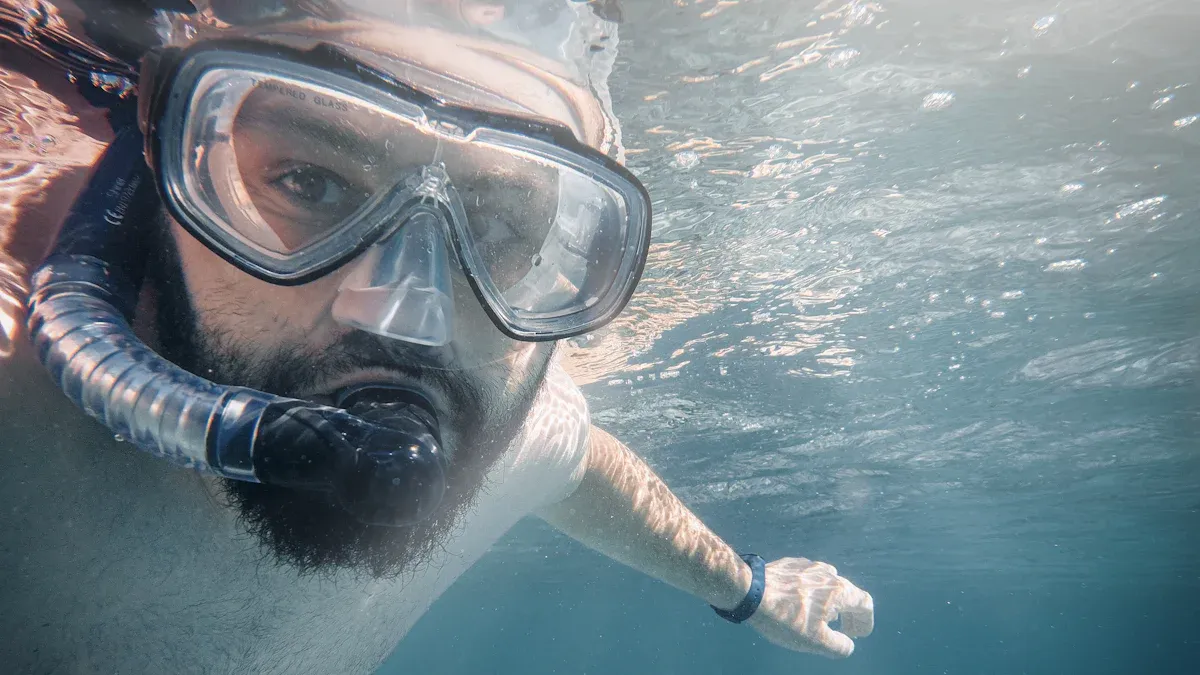
Here’s a simple way to determine which mask is best for your needs:
Elige uno full face snorkel mask if you:
- Are new to snorkeling and want a relaxed, natural breathing experience
- Plan to stay at the surface only
- Want a wide field of vision and a more immersive view
- Prefer comfort over diving flexibility
Elige uno traditional snorkel set if you:
- Want to dive or explore deeper
- Prioritize maneuverability and compact gear
- Are already familiar with mouth-only breathing
- Prefer gear with minimal fogging and proven air flow efficiency
Also consider the design of the mask and the quality of materials. Soft silicone skirts, anti-fog lenses, and dry-top snorkels can significantly enhance performance for either type.
Still Not Sure Which Mask to Choose? Let Our Snorkeling Gear Experts Help
As a professional diving equipment manufacturer, we understand that choosing the right gear can be overwhelming—especially with so many options on the market. That’s why we offer expert advice and customizable snorkeling solutions based on your experience level, usage scenario, and personal preferences.
Whether you’re looking for the best traditional snorkel mask for deep diving or a panoramic full face option for your next snorkeling adventure, our product specialists are here to help you make the right decision. We prioritize comfort, safety, clarity, and innovation in every design—because your underwater experience matters.
Reach out to us today and let’s find the perfect snorkeling mask for your next trip beneath the waves.
